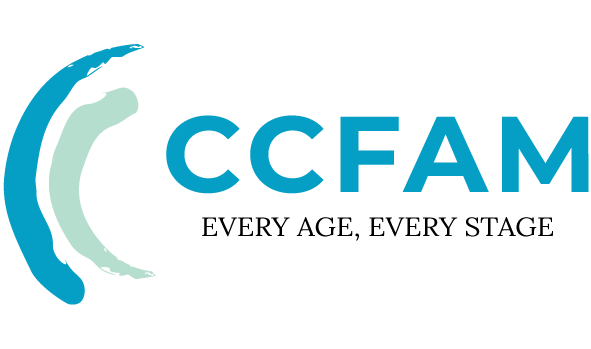03 Jun How Individual Counseling Can Help You Overcome Challenges
Life’s journey often brings psychological and emotional challenges that are best addressed with professional support. Individual counseling—also called personal therapy or one-on-one counseling—offers an evidence-based, DSM-5-aligned framework to help you navigate these difficulties. Unlike group formats, this personalized approach enables clinicians to tailor interventions to your specific needs, combining cognitive-behavioral techniques with person-centered models to promote healing and sustainable growth.
How Is Individual Counseling Different From Other Therapy Formats?
One-on-one counseling creates a confidential therapeutic alliance between a licensed clinician (for example, an LPC, LMFT, or LCSW) and a client. Research from the American Psychological Association (2023) suggests this format can produce better outcomes for treatment-resistant conditions than self-help strategies, in part because the therapeutic dyad enables targeted, responsive care. One-on-one work typically provides:
- Personalized treatment plans: Sessions are adapted to your biological, psychological, and social context rather than following a standardized group protocol.
- Depth-oriented processing: Extended focus on core issues such as attachment wounds, maladaptive schemas, or long-standing interpersonal patterns.
- Real-time skill building: Practice of practical techniques—like distress tolerance or exposure exercises—with immediate clinician feedback.
Evidence-Based Modalities Used in Personal Therapy
Contemporary individual counseling blends several clinically supported approaches, selected to match diagnosis and client goals:
- Cognitive-behavioral therapy (CBT) with exposure and response prevention (ERP): A first-line approach for many anxiety and obsessive-compulsive presentations (see clinical reviews and practice summaries for details).
- EMDR (Eye Movement Desensitization and Reprocessing): An established trauma-processing method endorsed by clinical authorities for certain PTSD presentations (U.S. Department of Veterans Affairs — EMDR overview).
- Motivational interviewing: A collaborative style used to resolve ambivalence in life transitions, behavior change, and addiction recovery.
Which Concerns Respond Best to One-on-One Counseling?
Clinical research indicates particular effectiveness for several conditions when individual treatment is delivered with appropriate modalities and clinician expertise:
1. Complex Trauma and PTSD
Individual counseling supports phase-oriented trauma treatment that typically progresses through:
- Stabilization (grounding techniques, strengthening the window of tolerance)
- Processing (trauma-focused work such as narrative exposure or EMDR)
- Reintegration (skills to manage triggers, relapse prevention, and rebuilding relationships)
2. High-Functioning Anxiety and Depression
For clients whose symptoms are subtle but impairing, personal therapy helps identify and modify maintaining factors, for example:
- Perfectionistic cognitions—addressed through cognitive restructuring and behavioral experiments
- Emotional avoidance—treated with acceptance-based strategies such as Acceptance and Commitment Therapy (ACT)
What to Look For When Choosing Individual Counseling
Consider these selection criteria, aligned with professional practice guidelines:
| Factor | Why It Matters |
|---|---|
| State licensure (LPC/LCSW/LMFT) | Confirms adherence to legal, ethical, and confidentiality standards (e.g., HIPAA) |
| Specialized training (e.g., DBT, IFS, trauma-focused modalities) | Important for treating complex presentations such as personality disorders or chronic trauma |
| Measurement-based care | Use of validated tools (for example, PHQ-9 and GAD-7) helps track progress and inform treatment adjustments (PHQ-9 overview, GAD-7 overview). |
The Science Behind Effective Individual Counseling
Recent findings from major research bodies highlight measurable benefits from focused therapeutic work. For example, some studies report substantial gains in emotional regulation and functioning following affect-focused and trauma-informed therapies, and neuroscience research supports the role of neuroplasticity in therapeutic change.
How to Maximize Your Personal Therapy Outcomes
Tactical strategies that increase the likelihood of meaningful progress include:
- Pre-session preparation: Note automatic thoughts, recent stressors, or specific incidents to discuss in session.
- Between-session practice: Commit to assigned homework such as behavioral activation activities or exposure tasks to reinforce in-session learning.
- Regular progress reviews: Revisit goals and measurements periodically (for example, quarterly) to adjust the treatment plan.
Frequently Asked Questions About Individual Counseling
1. How long does evidence-based personal therapy typically last?
Duration varies by issue and treatment model. Per clinical guidance, many acute problems may improve in 8–12 sessions, while complex trauma or personality-related presentations often require months of phased care. For practical guidance, see reputable clinical summaries (Mayo Clinic — psychotherapy overview).
2. Does insurance cover one-on-one counseling?
Many ACA-compliant plans cover outpatient therapy delivered by in-network clinicians. Coverage, copays, and limits vary—check your plan details and ask about Employee Assistance Programs (EAPs) where available.
3. Can I combine individual counseling with medication?
Yes. Integrated care models that combine psychotherapy with pharmacotherapy are commonly recommended for conditions such as major depressive disorder and certain anxiety disorders; consult a psychiatrist or primary care clinician for medication management and coordination of care.



Sorry, the comment form is closed at this time.